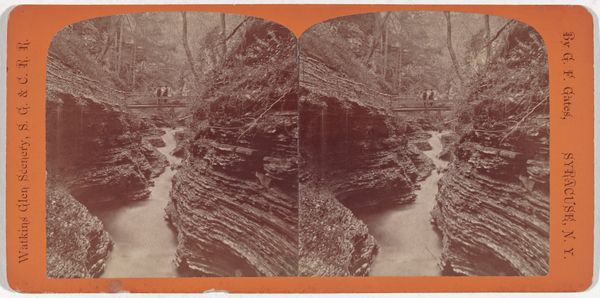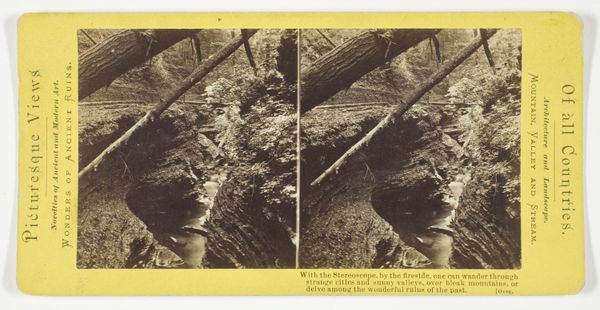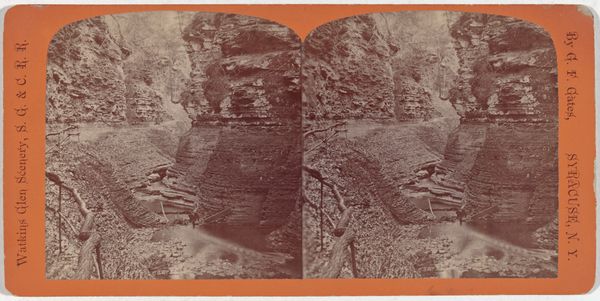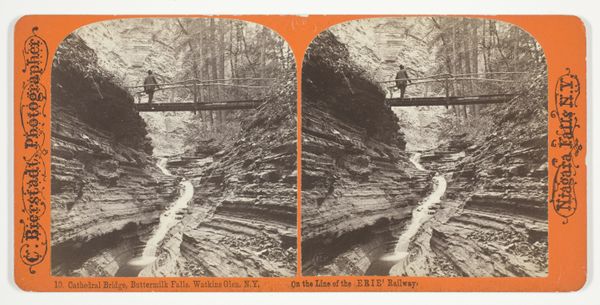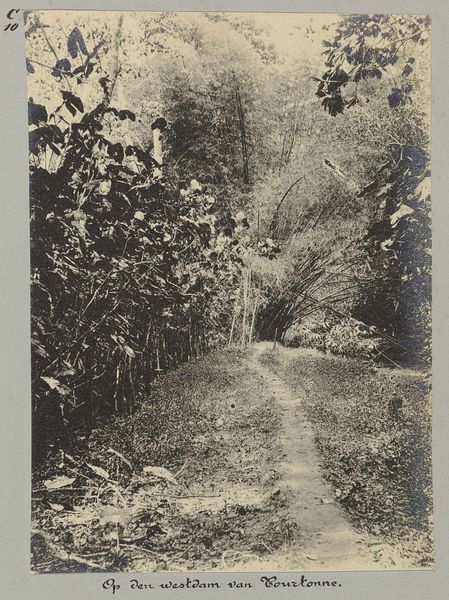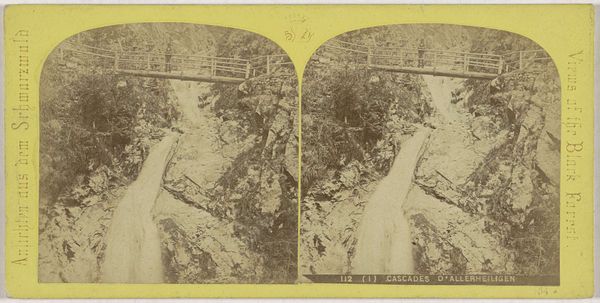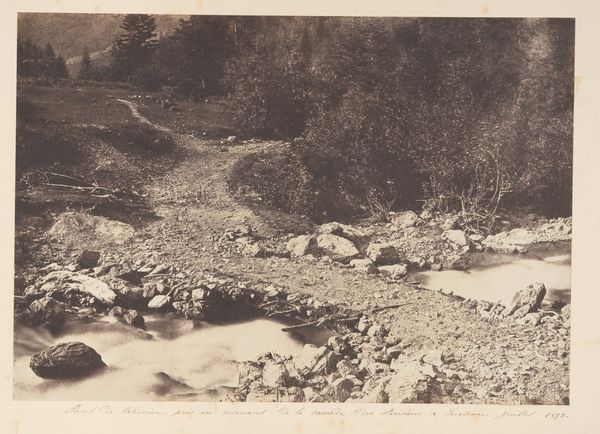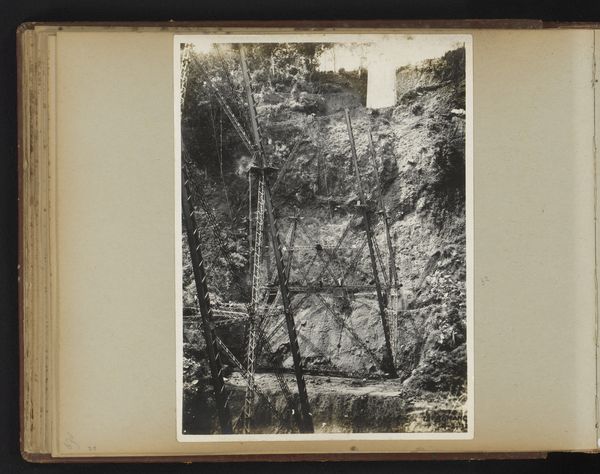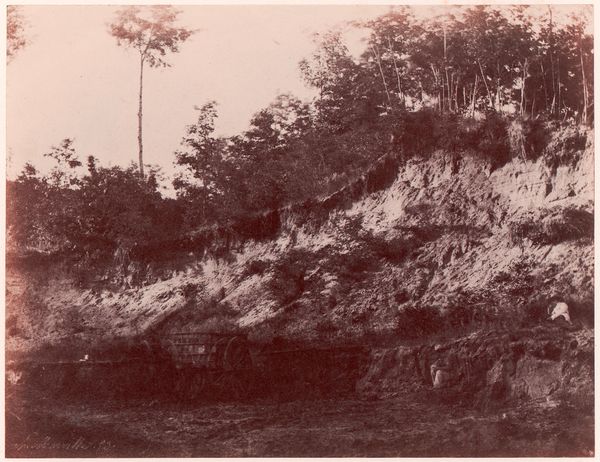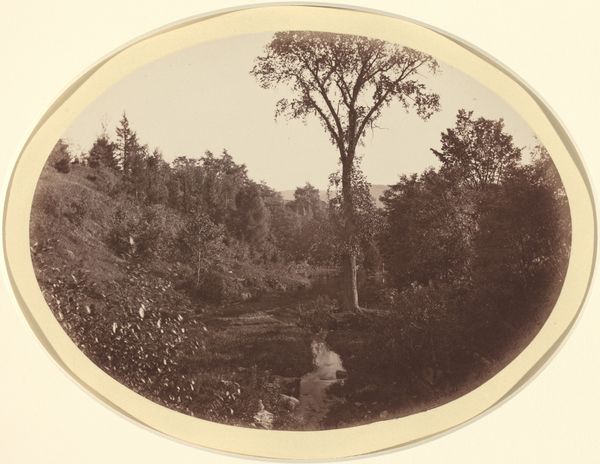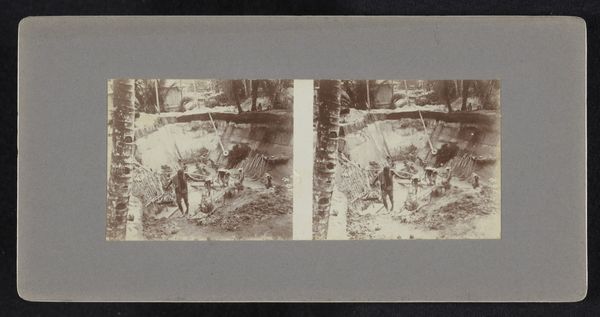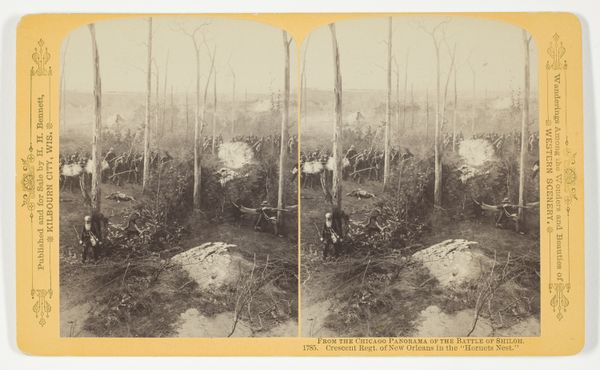
Frowning Cliff, distant view, Watkins Glen, N.Y. 1863 - 1903
0:00
0:00
Dimensions: 7.9 × 7.6 cm (each image); 8.6 × 17.5 cm (card)
Copyright: Public Domain
This stereograph, taken by Charles Bierstadt, captures a view of Watkins Glen, New York. The dominant feature is the cliff face, its dark, looming presence casting a shadow that seems to convey a sense of melancholy. Consider the visual metaphor: the cliff as a face, frowning. This anthropomorphism connects nature with human emotion. Such symbolic projection onto natural forms isn't new; we find it in ancient myths and legends. The idea of nature mirroring human moods appears across cultures, from the weeping willows in Chinese art to the turbulent skies in Romantic paintings. This mirroring speaks to our subconscious desire to find ourselves reflected in the world around us. The glen, with its frowning cliffs, becomes a canvas for our own anxieties and emotional states, a powerful force engaging viewers on a deep, subconscious level. It reflects a non-linear progression: the landscape and its emotional echoes, resurfacing, evolving, and taking on new meanings.
Comments
No comments
Be the first to comment and join the conversation on the ultimate creative platform.
